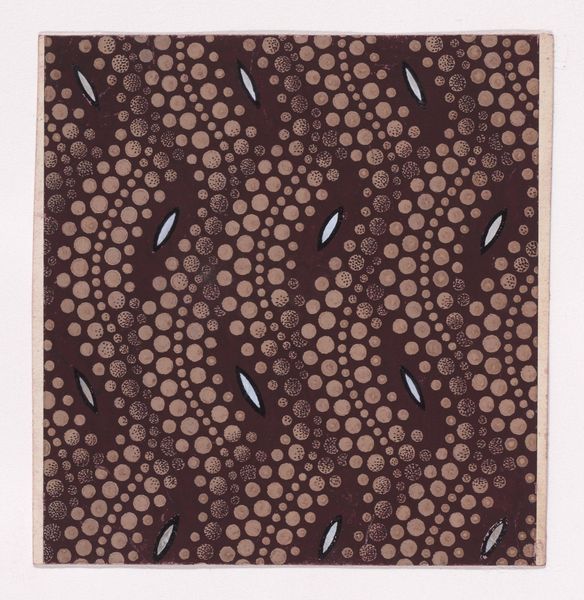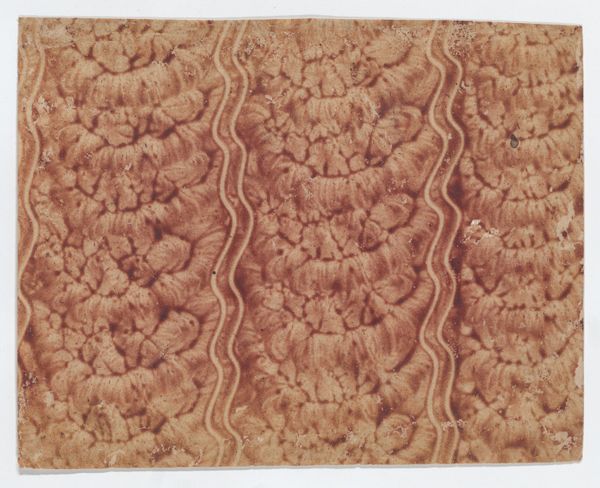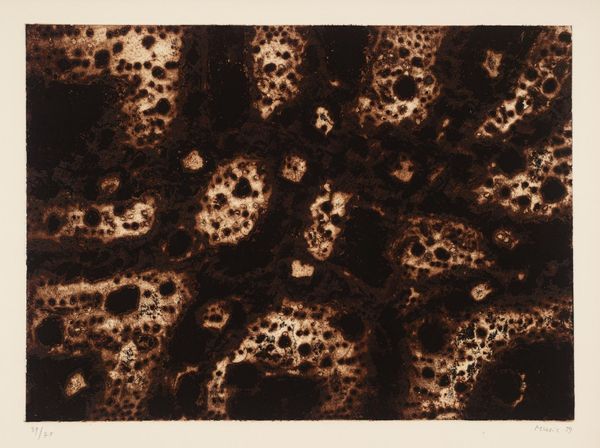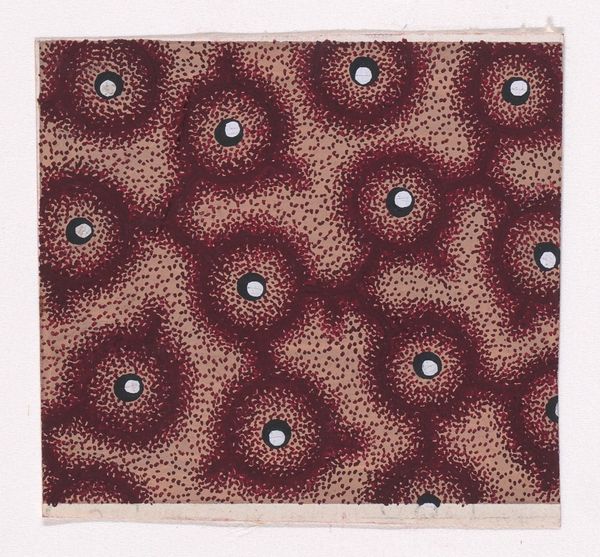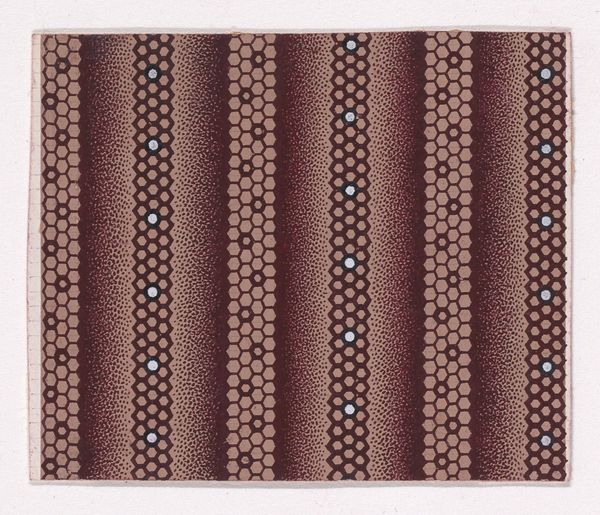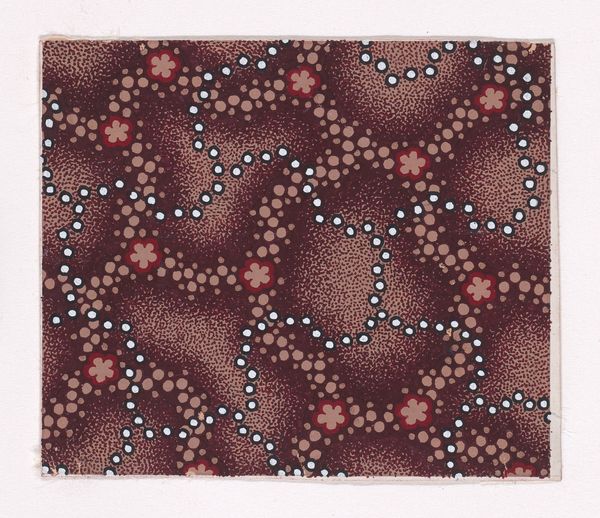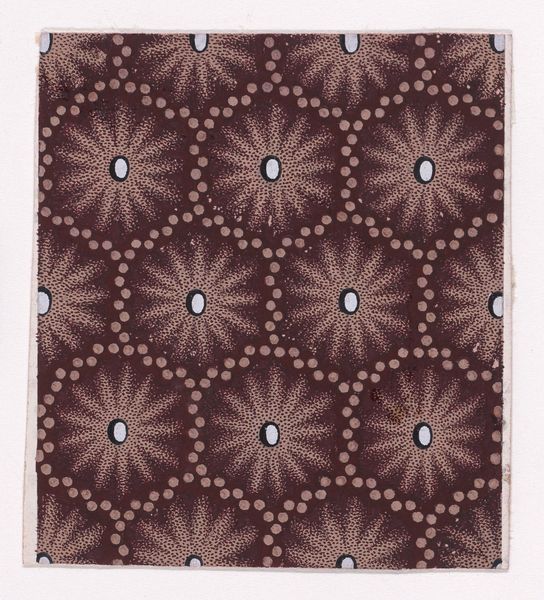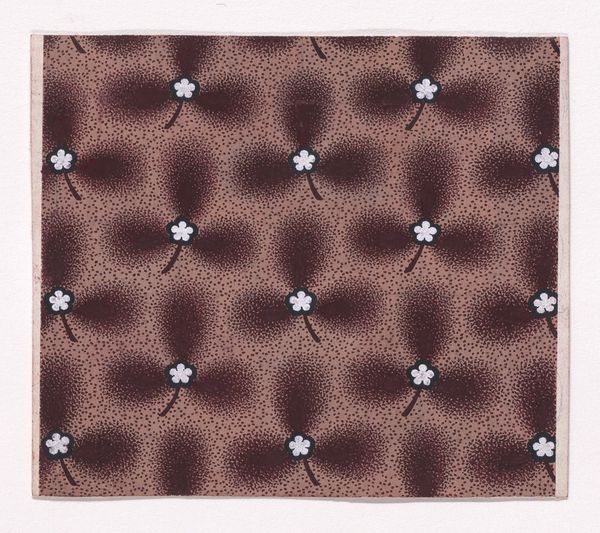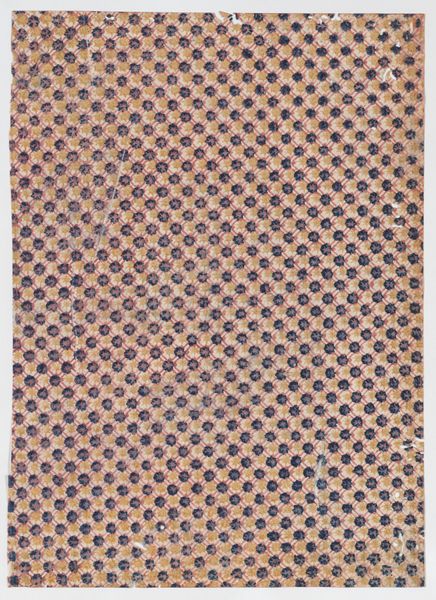
Textile Design with Vertical Strips of Clouds and Circles 1840
0:00
0:00
print, textile
# print
#
textile
#
geometric pattern
#
organic pattern
#
decorative-art
Dimensions: Sheet: 3 1/8 × 4 13/16 in. (8 × 12.3 cm)
Copyright: Public Domain
Curator: Before us, we have a textile design titled "Textile Design with Vertical Strips of Clouds and Circles," dating back to 1840. It is currently part of the collection at the Metropolitan Museum of Art. Editor: It feels both comforting and somewhat unsettling. The dense pattern, that stippled effect in the 'clouds,' is really quite hypnotic. Curator: Hypnotic is a good word. The repeating motif, characteristic of textile design, employs vertical stripes to structure the composition. We observe juxtaposed columns of cloud-like forms, and the stark lines of the interspersed circles. It exemplifies early uses of repetitive patterning for mass production. Editor: Looking at the context, how would such a piece influence society, do you think? Curator: In the 1840s, access to diverse textiles played a part in creating new classes, new aspirations. Patterns such as this democratized aesthetics; they were part of furnishing spaces to fulfill emergent notions of comfort, status, or modernity. The patterns are simultaneously soothing and invigorating, providing subtle narratives on a broader social canvas. Editor: So, it’s more than just aesthetics then? More like cultural communication? Curator: Absolutely. This particular design likely reflects the period’s fascination with natural motifs, rendered through a more formalized and easily reproducible technique. Think about it: repeating forms like clouds and circles tap into the vastness of the sky, tamed into digestible—and ultimately purchasable—units of décor. The formal geometric patterns suggest both control over nature and the endless cycles within nature. Editor: I had initially overlooked the 'taming' aspect, but now that you mention it, this piece feels less innocent and more purposeful in managing perception and class desires through its forms. It shows a cultural manipulation through everyday domestic art. Curator: Precisely. It reveals how social dynamics are quietly shaped via accessible aesthetics. I think that really unlocks this piece—it is about structure, about color—but equally, about control. Editor: That tension makes it especially memorable. Seeing design from this social lens, for all the objects' apparent serenity, now gives them an active participation and an influential standing within society.
Comments
No comments
Be the first to comment and join the conversation on the ultimate creative platform.

